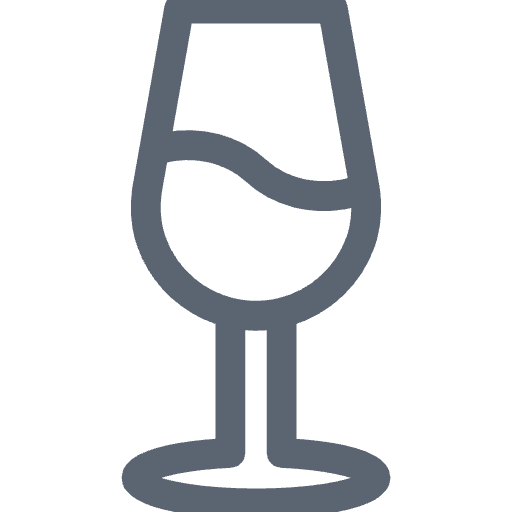6 Products

Sancerre
About Sancerre Wine

General information about Sancerre and Pouilly Fumé Wine
The aromatic Sauvignon Blancs of Sancerre and Pouilly are among the most famous wines in France. On the limestone and clay hills on both sides of the Loire, in a climatically extreme region, Sauvignon can produce better, certainly finer, and more complex wines than anywhere else in the world. The best producers manage to imbue their wines with the flavor of the terroir and impressive longevity. A brave taster would be someone who claims they can always distinguish a Pouilly-Fumé from a Sancerre. The best wines of each region are on the same level: the Sancerre perhaps a little fuller and more obvious, the Pouilly-Fume more fragrant.
Sancerre grape varieties
Sauvignon Blanc is used exclusively for Sancerre white wines, while Pinot Noir is used for the red wines of the appellation. Gamay and Cabernet Franc are also used in the surrounding wine-growing regions.
The terroir of Sancerre and Pouilly Fumé
In Sancerre, the soil is composed of approximately 40% limestone (caillottes), 40% clayey limestone (terres blanches), and 20% flint (silex). Flint is particularly prevalent in the north of Pouilly. The climate is continental, with cold winters and a certain risk of spring frost. Fourteen villages have the right to the Sancerre appellation, and many now add a vineyard name. Demand has been so great in recent decades that the total area of Sancerre's vineyards more than tripled in the last quarter of the 20th century, growing to 7,388 hectares by 2017: more than twice the size of Pouilly-Fumé's 1,325 hectares.

Many Pouilly vineyards lie at lower elevations than those of Sancerre, which surround the hilltop town at elevations of 200–350 m, and most of the best are located north of Pouilly proper. The soils here have a high proportion of clay and flint, lending the potential for long-lasting, almost biting wines described as "gunflint." Silex is present in both appellations, while vineyards in the west of the Sancerre appellation tend to be on terres blanches: white limestone soils with a high proportion of clay, which produce rather robust wines. In between, where the limestone (caillottes) is often mixed with pebbles, the wines are generally more aromatic and expressive when young and are bottled only a few months after harvest.
Menetou Salon, Quincy & Reuilly
Within the great river loop lie the other so-called Vignobles du Centre. Menetou-Salon, Quincy, Reuilly, and Châteaumeillant have all thrived over the past 30 years. Menetou-Salon has doubled in size to 576 hectares. The best producers make impressive Sancerre-like white and red wines, some of which are of excellent quality. Quincy and neighboring Reuilly were nearly wiped out, but have been revived thanks to producers sharing cellars and vineyard equipment. The low-lying sand and gravel deposited by the Cher River make Quincy particularly vulnerable to frost, so wind turbines are often used to churn the early morning air.
FAQ about Sancerre wine
Is Sancerre wine Sauvignon Blanc?
Yes, white Sancerre wine is made primarily from the Sauvignon Blanc grape.
Which grape is Sancerre?
Sancerre is made primarily from the Sauvignon Blanc grape.
Is Sancerre a grape variety?
No, Sancerre is not a grape variety name, but rather a wine region in France that specializes in wines made from the Sauvignon Blanc grape.
Where does Sancerre wine come from?
Sancerre wine comes from the Loire region in the eastern part of France.
What does Sancerre wine taste like?
Sancerre wines are typically dry, crisp, and exhibit citrus aromas such as grapefruit and lemon zest. They can also exhibit mineral notes and refreshing acidity.
What is a Sancerre wine?
A Sancerre wine is a dry white wine made from the Sauvignon Blanc grape and originates from the French wine region of Sancerre.
Is Sancerre a good wine?
Yes, Sancerre wines are among the most highly valued wines, and are often highly appreciated by lovers of dry, fruity white wines.
Is Sancerre dry?
Yes, Sancerre wines are generally dry in flavor profile.
What food goes well with Sancerre?
Sancerre pairs well with a variety of dishes, especially seafood, salads, mild cheeses and poultry dishes.
What does a Sancerre taste like?
A Sancerre is often fresh, dry, with lively acidity and aromas of citrus fruits and minerality.
Which Sancerre is the best?
The assessment of the "best" Sancerre wine is subjective and depends on personal preference. Wines from renowned producers or specific vineyards are often considered to be of particularly high quality.
What is the difference between Sancerre and Vouvray?
Sancerre is a region that primarily produces dry white wines from the Sauvignon Blanc grape. Vouvray, on the other hand, is another wine region in the Loire that specializes in wines from the Chenin Blanc grape and produces a wider range of wines, from dry to sweet.






